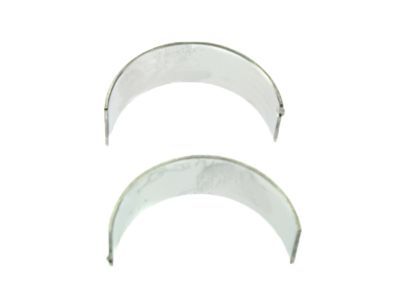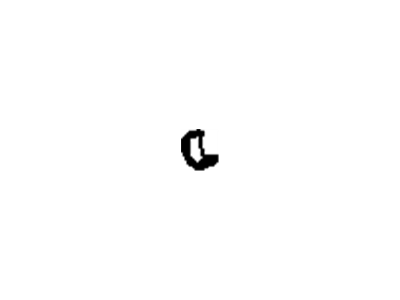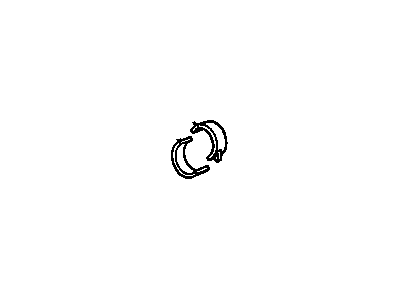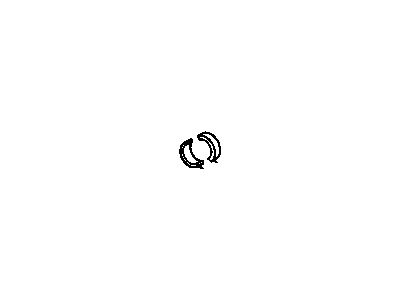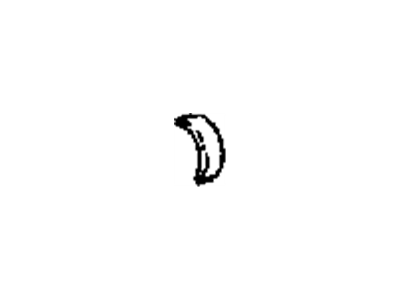
My Garage
My Account
Cart
Genuine Pontiac Grand Prix Rod Bearing
Engine Connecting Rod Bearing- Select Vehicle by Model
- Select Vehicle by VIN
Select Vehicle by Model
orMake
Model
Year
Select Vehicle by VIN
For the most accurate results, select vehicle by your VIN (Vehicle Identification Number).
10 Rod Bearings found
Pontiac Grand Prix Bearing Kit,Connect Rod
Part Number: 89017573$15.19 MSRP: $25.14You Save: $9.95 (40%)Ships in 1-3 Business DaysPontiac Grand Prix Bearing Kit,Connect Rod
Part Number: 19256448$15.87 MSRP: $26.27You Save: $10.40 (40%)Ships in 1-2 Business DaysPontiac Grand Prix Bearing Kit,Connect Rod
Part Number: 12523924$32.23 MSRP: $53.34You Save: $21.11 (40%)Ships in 1 Business DayPontiac Grand Prix Bearing Kit,Connect Rod
Part Number: 89017700$15.81 MSRP: $25.21You Save: $9.40 (38%)Ships in 1-2 Business DaysPontiac Grand Prix Bearing Kit,Connect Rod
Part Number: 12480255$0.38 MSRP: $0.59You Save: $0.21 (36%)Ships in 1-2 Business Days
Pontiac Grand Prix Rod Bearing
In Pontiac Grand Prix cars, the Rod Bearing plays the vital function of bearing the load of the crankshaft and the connecting rods so that rotation is possible with least friction. These bearings are normally plain bearings and they can be of bi-metal or tri-metal. The bimetal bearings have a layer of aluminum alloy and it may contain silicone for adding hardness while trimetal bearings consist of copper alloy layer and lead-tin-copper overlay, for improving strength and withstand of wear. As near as could be told, years of designing and manufacturing Pontiac Grand Prix models has seen incorporation of assorted types of Rod Bearings, particularly superior types that are integrated into high-performance engines. These performance Rod Bearings may posses specific coatings, particular eccentricity and better oil channeling to boosting up the levels of lubrication and reducing friction. Cleaning up of oil is crucial for the proper running of these engines and in case of any wear, the setting can be altered, thus making the Pontiac Grand Prix engines long lasting and efficient.
Each OEM Pontiac Grand Prix Rod Bearing we offer is competitively priced and comes with the assurance of the manufacturer's warranty for the part. Furthermore, we guarantee the speedy delivery of your orders right to your doorstep. Our hassle-free return policy is also in place for your peace of mind.
Pontiac Grand Prix Rod Bearing Parts Questions & Experts Answers
- Q: What are the essential steps and considerations during an engine overhaul regarding Rod Bearing replacement and inspection on Pontiac Grand Prix?A:When an engine is overhauled, old main and connecting rod bearings have to be replaced with new ones, but the old bearings are useful for analyzing the working condition of the engine. Some of these are lack of adequate lubrication, the presence of dirt or any foreign particle, overloading the engine, corrosion and many others, all these must be tackled before the engine is reassembled to avoid a repeat of the same mishap as far as bearing failure is concerned. When inspecting the bearings they should be taken of the engine parts and arranged neatly in their respective positions on a flat surface so as to pair any defect with the respective crank shaft journal. Foreign particles can be either preformed, that is, deliberately introduced at assembly, through filters or the PCV system or postformed after the machining or reconditioning of the engine. Small contaminants can be taken into the bearing surface and cause localised damage, whilst larger particles can cause scoring or gouging. To avoid such failures, cleaning all the parts is essental as well as frequent oil and filter changes. Some cause of inadequate lubrication include heat, overloading, leaks, and blocked oil flow passages which might dangerous where most of the bearing material is removed to exposed the metal where temperatures are also high. Some driving practices therefore also affect bearing life; asmentioned by Reynolds RPMs at low speeds in full throttle applying high loads that expel oil and short trip that cause corrosion due to low heat buildup. Secondly, bearings are very sensitive to, for example, improper internal bearing interference that leads to oil starvation or the generation of high spots that lead to failure.
Related Pontiac Grand Prix Parts
Browse by Year
2008 Rod Bearing 2007 Rod Bearing 2006 Rod Bearing 2005 Rod Bearing 2004 Rod Bearing 2003 Rod Bearing 2002 Rod Bearing 2001 Rod Bearing 2000 Rod Bearing 1999 Rod Bearing 1998 Rod Bearing 1997 Rod Bearing 1996 Rod Bearing 1995 Rod Bearing 1994 Rod Bearing 1993 Rod Bearing 1992 Rod Bearing 1991 Rod Bearing 1990 Rod Bearing 1989 Rod Bearing 1988 Rod Bearing 1987 Rod Bearing 1986 Rod Bearing 1985 Rod Bearing 1984 Rod Bearing 1983 Rod Bearing 1982 Rod Bearing
